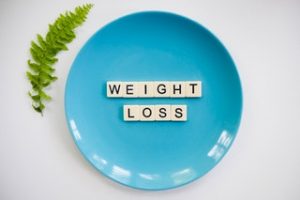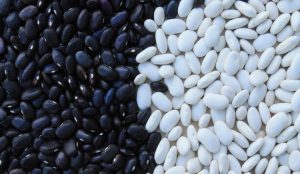Every year millions of us make New Year’s resolutions. The most common ones relate to diet and weight loss. Yet, very few of us keep these resolutions long term. Most of us fail in the first month. Some dieters make short-term progress but eventually relapse. Few lose weight and keep it off.
Is healthy eating really so difficult?
 Resolutions may reflect the best of intentions. Starting a new diet can even be exciting! Yet, there are a dizzying number of diets, varying in composition based on the foods or nutrients allowed or prohibited. Some diets focus on macronutrient composition (% intake of protein, carbohydrate, or fat); others exclude certain foods or ingredients, such as gluten or certain types of sugars. Many diets are strict, making adherence difficult, or unrealistic, especially if the diet doesn’t match your lifestyle and/or food preferences.
Resolutions may reflect the best of intentions. Starting a new diet can even be exciting! Yet, there are a dizzying number of diets, varying in composition based on the foods or nutrients allowed or prohibited. Some diets focus on macronutrient composition (% intake of protein, carbohydrate, or fat); others exclude certain foods or ingredients, such as gluten or certain types of sugars. Many diets are strict, making adherence difficult, or unrealistic, especially if the diet doesn’t match your lifestyle and/or food preferences.
Which popular weight loss diets work best?
 Research designed to compare the relative effectiveness of various weight-loss diets has demonstrated that the macronutrient composition of the diet does not have an appreciable effect on weight loss and that there are few differences in long-term outcomes among popular diets. In general, study participants lost weight on a diet if it reduced their calorie intake and they stuck with it, which really depended on their unique food preferences. In other words, adherence to the diet was the key to their success.
Research designed to compare the relative effectiveness of various weight-loss diets has demonstrated that the macronutrient composition of the diet does not have an appreciable effect on weight loss and that there are few differences in long-term outcomes among popular diets. In general, study participants lost weight on a diet if it reduced their calorie intake and they stuck with it, which really depended on their unique food preferences. In other words, adherence to the diet was the key to their success.
Set sustainable diet goals!
 For any diet resolution to work, it must be congruent with the unique lifestyle and food preferences of the individual adopting it. If it is unrealistic or burdensome, failure is inevitable. Further, bodyweight is just one feature of health… So, what diet is the best for overall health? No ONE diet works for everyone, but there are practices worth adopting for any healthful diet.
For any diet resolution to work, it must be congruent with the unique lifestyle and food preferences of the individual adopting it. If it is unrealistic or burdensome, failure is inevitable. Further, bodyweight is just one feature of health… So, what diet is the best for overall health? No ONE diet works for everyone, but there are practices worth adopting for any healthful diet.
Focus on food.
 This year, instead of adopting a complicated diet, counting calories or calculating the macronutrient composition of each food or meal, resolve to eat high quality foods. Make small steps. For example, rather than avoiding carbohydrates altogether or worrying about the amount of carbohydrate in the diet, focus on the types of foods that provide you carbohydrates. Plant foods like vegetables, fruits, and whole grains are the healthiest options. They are dense in nutrients, but not calories. They provide essential micronutrients (vitamins and minerals), fiber, as well as beneficial phytochemicals, and eating them will give you a sense of fullness. Also, people who consume more plant rather than animal foods tend to have reduced body fat mass and risk for chronic diseases such as type 2 diabetes, cardiovascular disease, and cancer, and increased longevity. Fruits, vegetables, and whole grains should comprise around 75% of your diet.
This year, instead of adopting a complicated diet, counting calories or calculating the macronutrient composition of each food or meal, resolve to eat high quality foods. Make small steps. For example, rather than avoiding carbohydrates altogether or worrying about the amount of carbohydrate in the diet, focus on the types of foods that provide you carbohydrates. Plant foods like vegetables, fruits, and whole grains are the healthiest options. They are dense in nutrients, but not calories. They provide essential micronutrients (vitamins and minerals), fiber, as well as beneficial phytochemicals, and eating them will give you a sense of fullness. Also, people who consume more plant rather than animal foods tend to have reduced body fat mass and risk for chronic diseases such as type 2 diabetes, cardiovascular disease, and cancer, and increased longevity. Fruits, vegetables, and whole grains should comprise around 75% of your diet.
Prioritize protein source.
 Most of us in the U.S. eat far more protein (especially animal protein) than is recommended for health and longevity. Focus on the overall quality of the foods that provide protein in your diet, not just the amount or quality of protein in the food, but other components of the food. Choose plant sources of protein—like beans, peas, lentils, nuts, and seeds—which contain a lower total amount of protein, but include micronutrients, phytochemicals, and fiber not in animal sources of protein. When choosing protein-rich animal foods, choose yogurt, fish, and poultry, but limit cheese, beef, pork, and processed meats (bacon and cold cuts), which are higher in saturated fat and preservatives and have a far higher negative impact on the environment.
Most of us in the U.S. eat far more protein (especially animal protein) than is recommended for health and longevity. Focus on the overall quality of the foods that provide protein in your diet, not just the amount or quality of protein in the food, but other components of the food. Choose plant sources of protein—like beans, peas, lentils, nuts, and seeds—which contain a lower total amount of protein, but include micronutrients, phytochemicals, and fiber not in animal sources of protein. When choosing protein-rich animal foods, choose yogurt, fish, and poultry, but limit cheese, beef, pork, and processed meats (bacon and cold cuts), which are higher in saturated fat and preservatives and have a far higher negative impact on the environment.
Fats.
 Choose healthier oils like olive and canola. Limit butter. Avoid saturated and trans fats and foods containing them.
Choose healthier oils like olive and canola. Limit butter. Avoid saturated and trans fats and foods containing them.
Try new things.
Incorporate many high-quality foods in your diet. Variety and balance are important. For example, trying many different fruits and vegetables of all colors helps ensure adequate intake of nutrients and phytochemicals. Also, try different whole grains, including oats, rice, quinoa, and whole-wheat bread and whole-grain pasta.
Avoid “empty” calories.
 Sugar-sweetened beverages, alcoholic beverages, and foods like candy and pastries are lower quality foods, and consuming them is associated with poorer health outcomes. These items tend to be more dense in calories but provide little nutritional value. They are easy to overconsume and should be avoided or consumed in moderation. Choose water or tea rather than sugary or alcoholic beverages and opt for fruit for dessert or snacks rather than pastries or candy.
Sugar-sweetened beverages, alcoholic beverages, and foods like candy and pastries are lower quality foods, and consuming them is associated with poorer health outcomes. These items tend to be more dense in calories but provide little nutritional value. They are easy to overconsume and should be avoided or consumed in moderation. Choose water or tea rather than sugary or alcoholic beverages and opt for fruit for dessert or snacks rather than pastries or candy.
Limit sodium.
Sodium is often higher in restaurant foods and processed or packaged foods, like frozen pizzas, canned soup and tomato products, and items like pickles. Prepare food at home and choose low-sodium options when possible. Flavor foods with herbs rather than salt. Higher-quality foods tend to be lower in sodium and richer in under-consumed minerals like potassium, magnesium and calcium.
Summary:
There is no ONE best diet for 2020. Rather, an effective diet is one that is tailored to an individual’s lifestyle and food preferences and sustainable for life. When planning a diet, the focus should be on consuming high-quality foods—mostly whole, minimally processed, and primarily from plant sources…with a focus on variety, balance, and moderation.
Cheers to 2020 and achieving your long-term nutrition and health goals!


Thanks for writing this article James!
I liked what you focused on